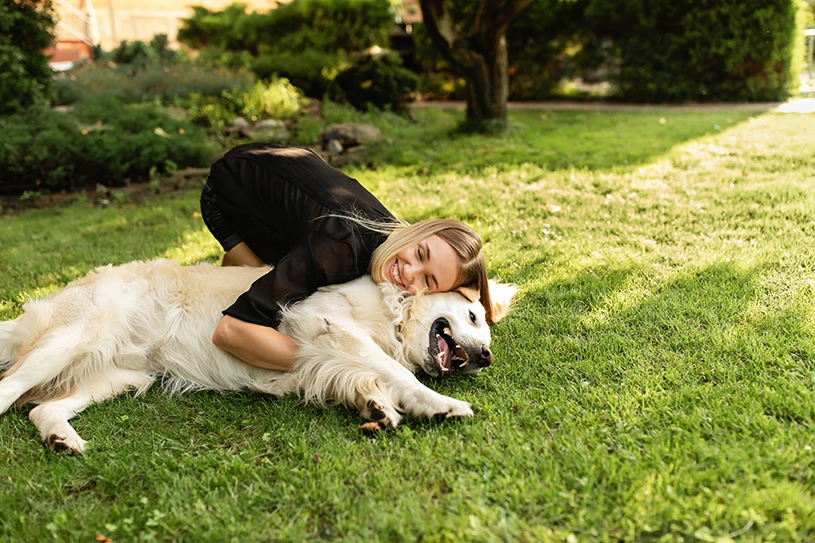Pets are experts at having medical emergencies at the worst times. It’s always on a Sunday holiday at 2:00 in the morning when it’s impossibly hard to find emergency care when they start showing terrible symptoms of something. And it’s not their fault; there should be medical attention available.
But what happens if you have to act fast? What happens if your dog accidentally ate poison? How to save them? Should you make them vomit?
Inducing vomiting in your pet (whether it’s a dog or a cat, or any other) is a very delicate matter.
Attempting to induce vomiting without proper training and knowledge can result in serious harm to the animal.
Why You Would Need to Induce Vomiting?
Inducing vomiting in a pet might be necessary to empty the stomach contents. You should only do this under the guidance of a veterinarian, as it can be dangerous for you and your pet.
On the one hand, inducing vomiting on your pet can be of help under certain circumstances. On the other hand, vomiting could only worsen the problem. When is it helpful for your pet to vomit? If they have ingested a toxic substance, food, medication, a solid object, or chemicals.
Let’s divide the scenarios into two categories: solids and liquids.
First of all, you should keep toxic substances and chemicals out of your pet’s way; just as you would with kids. But accidents occur.
The thing with liquids and vomiting is that if your dog or cat ingested any chemical, after two hours, it would not help to try and vomit since the stomach contents will be on the intestines by then. It’s also important to consider the nature of the liquid because most chemicals will hurt even more by going back into the mouth.
If your pet swallowed an object (depending on the object), vomiting might complicate the situation. Sharp or edged objects could get stuck or cause wounds if forced. Vomiting could only help if the object is soft, bland, or round.
Never try inducing vomit in your pets without first consulting with your pet’s vet if that’s okay.
How to Induce Vomiting in Dogs?
Inducing vomiting can be dangerous and potentially harmful to animals if not done correctly. Some specific protocols and guidelines must be followed, and a veterinarian is the best person to determine if inducing vomiting is necessary and to administer it safely.
Especially do not try to induce vomiting if your pet is lethargic or unconscious.
Is It Safe to Use Hydrogen Peroxide to Induce Vomit in Your Dog or Cat?
When your vet gives you the “ok,” you can administer 1 teaspoon of 3% hydrogen peroxide every 10 pounds of weight. You can do this in 15-minute intervals up to four times. Usually, your dog will start vomiting after the first 10 minutes.
For cats, the process is the same, with the difference that cats can take up to 1 teaspoon for every 5 pounds of weight. Do not give your cat more than 3 teaspoons of hydrogen peroxide.
You can try to make them walk around so the hydrogen peroxide mixes with the stomach contents. Do not force them if they don’t want to walk.
You can use a syringe, a dropper, or soaked cotton to administer. It’s most effective if you locate the drops at the end of their tongue.
How Not to Induce Vomiting in Your Pets
If your dog or cat fails to vomit after you gave them 2 doses of hydrogen peroxide, do not give them more. It’s better to administer less hydrogen peroxide than needed because higher quantities could harm their stomach. The right concentration for this product is 3% and nothing higher.
Some pet owners try to provoke vomiting by gagging their dogs or cats, but this is ineffective since your pet does not have the same gag reflex as humans. You risk hurting their throat or mouth by sticking your fingers in it, and you could get bitten.
Feeding them oil or salt to induce vomiting is dangerous and will not work. Your pet could get seriously ill if you do this.
What Foods or Substances Are Toxic for My Pets?
Aside from the obvious things such as poison, bleachers, and caustic chemicals, some common things can be toxic for cats and dogs.
Cats:
- Lilly plants—flowers included.
- Onions and Garlic are toxic to both dogs and cats.
- Chocolate can also be deadly in dogs.
Dogs:
- Grapes and Raisins.
- Xylitol.
- Alcohol.
It’s important to mention this is not an exclusive list, and there can be other substances toxic to your pets depending on their breed and other factors.
Pet Emergency – Irvine Animal Hospital
As a pet owner, you owe your animal friend a safe veterinarian in case of an emergency! Be prepared.
Orange County Emergency Animal Hospital is a reliable solution in case of pet intoxication but also a great Irvine Animal Hospital for general vet care.



